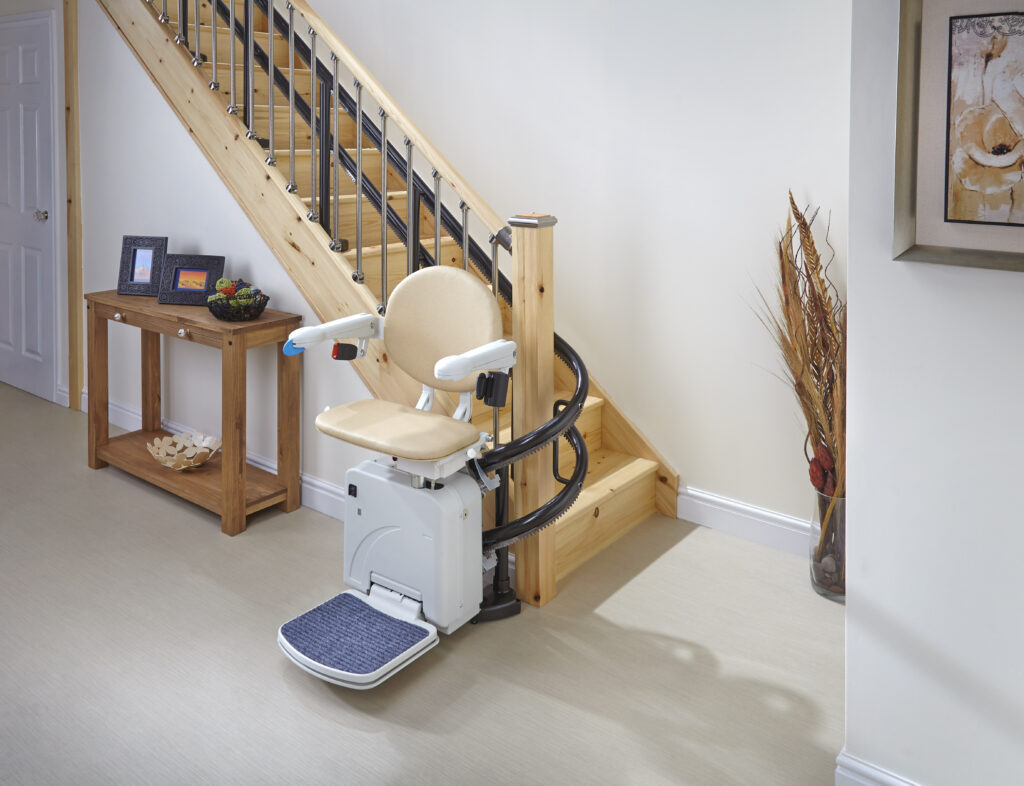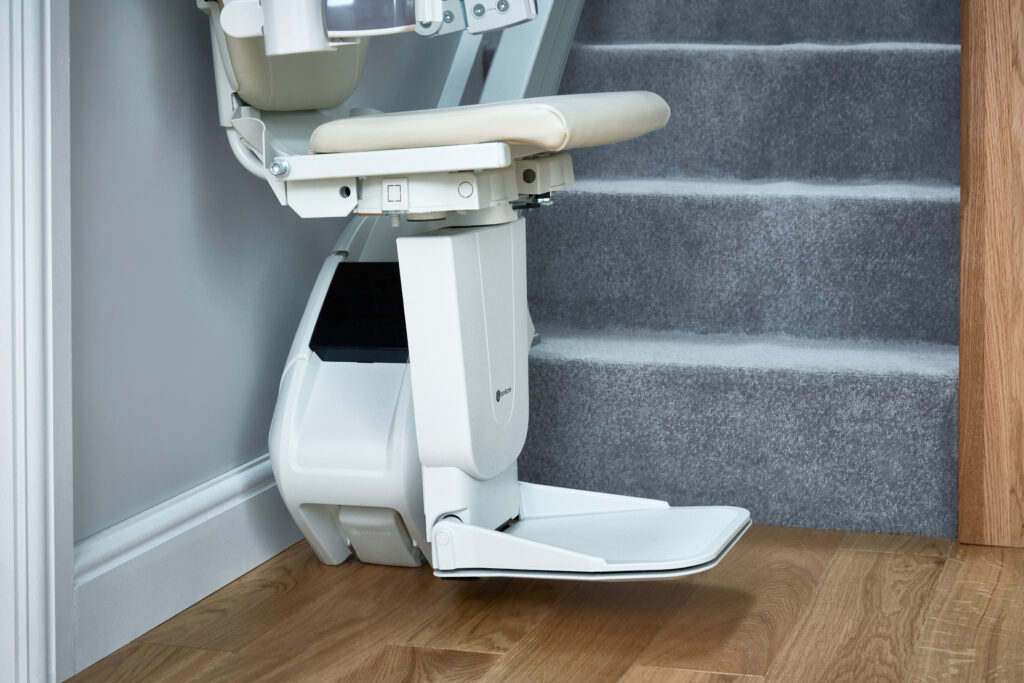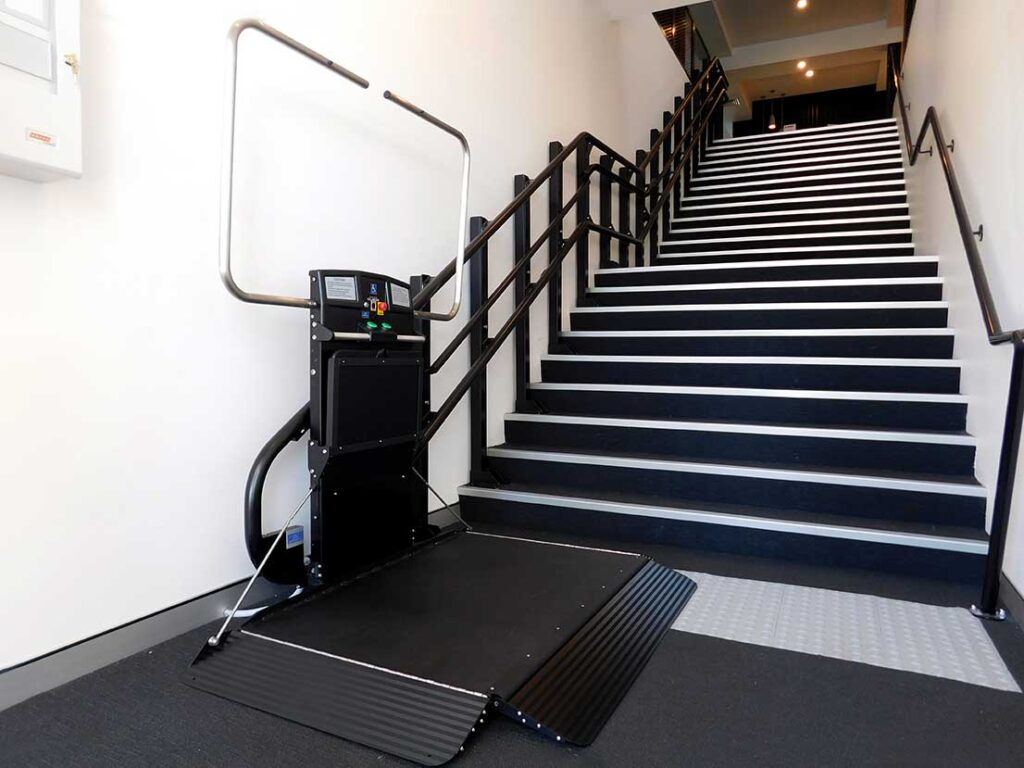Stair Lift Weight Limit: is there a Maximum?
When considering the purchase of a stair lift, knowing the maximum stair lift weight capacity is crucial to ensure safety and optimal performance. Stair lifts are designed to cater to a wide range of users, and their weight capacities reflect this diversity.
Table of Contents
Here’s a look into the weight limits available for stairlifts, presented in both kilograms (kg) & stone:
| Stairlift Type | Metric Weight Supported | Imperial Weight Supported |
| Standing Stairlift | 136 kg | 21 Stone |
| Default Stairlift | 136-158 kg | 21-25 Stone |
| Heavy Duty Stairlift | 196 kg | 31 Stone |
| Platform Lift | 340 kg | 53 Stone |
| Elevator Lift | 907-2,268 kg | 142-357 stone |
Standard Stair lift Weight: 158 kg (25 Stone)

standard stairlifts support users up to 136-158 kg (21-25 stone).
These models are suitable for a significant portion of the population and are designed to provide reliable, safe mobility for everyday use. Your Standard more modern models of stairlifts can support a surprisingly large amount of weight.
With features such as swivel seats for easy boarding and disembarking, safety sensors to prevent collisions, and footrests and seats that can fold away to conserve space when not in use, stair lifts enhance independence and improve the quality of life for individuals facing mobility issues.
Heavy Duty Stair lift Weight: 196 kg (31 Stone)

Heavy Duty models can generally accommodate weights from 158-196 kg (25-31 Stone).
For users who require a higher weight capacity, heavy-duty stair lifts are an excellent choice. Heavy-duty stair lifts are engineered with stronger motors, wider seats, and more robust tracks to ensure safety and durability.
Specialised Models

Some manufacturers offer specialised stairlifts that can support more than 272 kg (42 stone). These models are less common and may require custom manufacturing to meet specific needs.
Some more specialised stair lift types that may suit you are:
- Platform Stair lift
- Standing Stair lift
- Elevator Lift
Platform Stair Lift
Platform lifts, also known as Wheelchair lifts, a chair lift for stairs or vertical platform lifts, are a vital solution for some where a conventional stair lift is unsuitable. Unlike stairlifts, which are designed to transport individuals seated in a chair along the contour of a staircase, wheelchair lifts accommodate users while they remain in their wheelchairs.
Platform Stair lifts of wheelchair lifts can have weight limits that exceed 340 kg (53 stone).
Standing Stair Lift
A standing stair lift caters to individuals who face difficulty navigating stairs due to balance, joint, or flexibility issues but can stand upright safely. Unlike traditional seated stairlifts or wheelchair lifts, a standing stair lift features a small platform and a secure, upright posture support, allowing users to ascend or descend stairs in a standing position.
Standing Stair lifts typically have a weight limit of 136 kg (21 stone).
They are an ideal option for a narrow staircase where traditional seated stair lifts cannot fit, offering an alternative that enables individuals to maintain their independence and access different levels of their home or public buildings without assistance. By addressing the unique needs of users with limited mobility, standing stair lifts enhance quality of life and facilitate safer, more comfortable home environments.
Elevator Lift
An elevator lift, often referred to simply as an elevator, is a permanent fixture in multi-story buildings designed to transport people or goods between floors efficiently and safely. Unlike stairlifts or wheelchair lifts that are added to existing staircases, elevator lifts are integrated into the building’s structure, offering a seamless solution for vertical mobility.
An Elevator Lift can have weight limits between 907-2,268 kg (142-357 stone).
You can contact Senior Stairlifts to gain some expert knowledge on how to get one of these specialised models of stair lift.
Important Considerations
Accuracy is Key
It’s essential to have an accurate understanding of the user’s weight to select a stair lift that provides the necessary support. The weight capacity of the stair lift should meet or exceed the user’s weight to ensure safety and longevity of the equipment.
Consultation and Customisation
When in doubt, consult with the stair lift supplier or manufacturer. They can provide detailed advice on which models are best suited to the user’s weight and other specific requirements.
For users near the upper limit of a stairlift’s weight capacity, or for those who require additional space or features, customisation options are available.
Future Proofing
Consider the long-term needs of the user. Opting for a stair lift with a higher weight capacity can be a wise choice to accommodate any future changes in the user’s mobility or weight. By considering the user’s weight and consulting with professionals to find the right stair lift model, you can ensure a safe, comfortable, and reliable mobility solution in the home.
Always prioritize safety and suitability when selecting a stair lift, ensuring that the chosen model adequately meets the specific needs of the user.